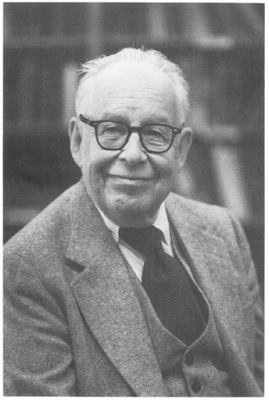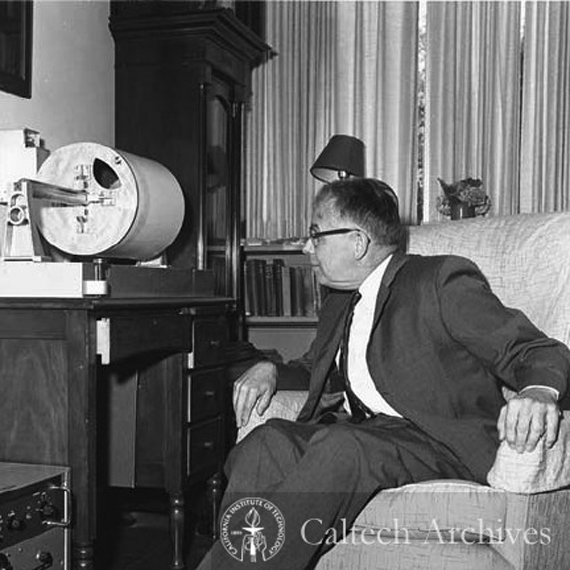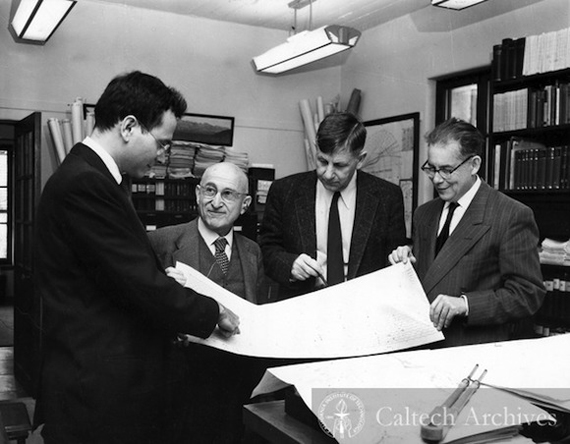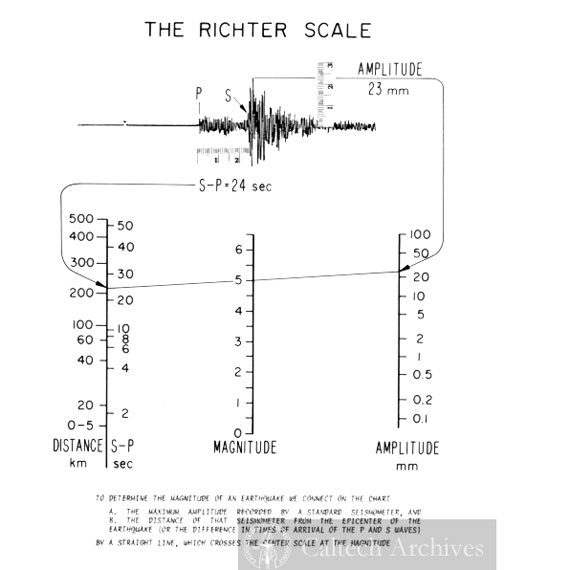On September 30, 1985 one of the pioneers of Seismology, a science to which he devoted more than 50 years of his life, died. His main work, Elementary Seismology, based on the classes he taught as professor of Seismology and published in 1958, was for many years an essential compendium on observational seismology. From 1959 to 1960 he was president of the Seismological Society of America and the second person to be awarded the Society’s medal in 1977. However, the surname Richter, inherited from his mother, became famous around the world for giving his name to the first scale used for measuring the scale of earthquakes, which he contributed to develop.

Charles Francis Richter was born on April 26, 1900 in a farming community in Hamilton, Ohio. Aged 9 and following the divorce of his parents, we moved with his grandfather, his mother and his eldest sister to Los Angeles. Aged 16 he had already completed his secondary education studies and at the age of 20 he graduated in Physics from Stanford University. He continued his studies in Pasadena, at the California Institute of Technology (Caltech), where he earned his PhD in Theoretical Physics in 1928. The same year he married Lillian Brand, a relationship that lasted for over 40 years until she died in 1972. They had no children, except for a son from a previous relationship of his wife. In 1927, Richter accepted a temporary job as assistant at the Seismologic Institute of Pasadena. Because with his training in quantum physics he never intended to become a seismologist and even less the most famous one of all times. However, chance meant that since then and until his retirement in 1970, he would spend his entire scientific career as a seismologist at that institution. He devoted all his life to his work and even had a seismograph installed in his living room to be able to monitor earthquakes at all times.

The turning point would happen in early 1930, when he met Beno Gutenberg, a renown German mathematician and geophysicist and also a scientist at Caltech. Both routinely examined the new seismograms registered at the Laboratory, which led them to discover some significant features of the records. They both started a collaboration that would lead Richter to introduce the term “magnitude” in seismology, to develop a local magnitude scale for earthquakes and to later extend this concept to earthquakes with the epicenter at a great distance from the place where they are registered. He never called it “Richter scale” because he thought it would underestimate the collaboration with Gutenberg, but to the world his name would forever be associated with the magnitude of earthquakes.

Even today the most elementary textbooks on seismology explain how the intensity of an earthquake is measured, while before 1930 there was no answer to that question. There were scales for characterizing an earthquake’s severity in different places based on its effects (what today we know as “intensity”), but not for assessing the size of the earthquake itself. Richter and Gutenberg conceived a mathematical calculation that determined the magnitudes from the logarithm of the amplitude of the seismic waves registered by seismographs located at different distances. This empirical scale is known today as “local magnitude” (LM).

Richter’s original definition of magnitude only applied to earthquakes that occurred in Southern California at a distance of less than 600 km from a particular type of seismograph (a Wood-Anderson torsion measuring instrument). It was later extended to earthquake observations at any distance and focal depth. This is how other types of magnitude scales appeared, such as the mb or Ms scales depending on the type of seismic waves used to estimate them. Magnitude scales have no upper or lower limit and, due to their logarithmic base, each increase of one unit of magnitude represents ten times the amplitude, which corresponds to 31 times more energy released.
And despite its repeated use by the media, the Richter magnitude scale is not used today to calculate the magnitude of earthquakes. There is something better: the seismic moment (Mw) that is calculated based on physical parameters of the fault process.
You can read more from Arantza Ugalde in her personal blog.
Read more:
- Allen, C. R. (1987). Charles F. Richter. A personal tribute, Bulletin of the Seismological Society of America, Vol. 77, No. 6, pp. 2234-2237
- California Institute of Technology. Archives.
- Hough, Susan Elizabeth (2007). Richter’s scale: measure of an earthquake, measure of a man. Princeton: Princeton University Press.
- Richter, C.F. (1935). “An instrumental earthquake magnitude scale”. Bulletin of the Seismological Society of America. 25 (1–2): 1–32.
- Richter, C.F. (1958). Elementary seismology. San Francisco, W. H. Freeman, 768 pp.
- Richter, Charles (1979) Interview with Charles Richter. [Oral History] (Unpublished)http://resolver.caltech.edu/CaltechOH:OH_Richter_C
Arantza Ugalde
Sismologist
Comments on this publication